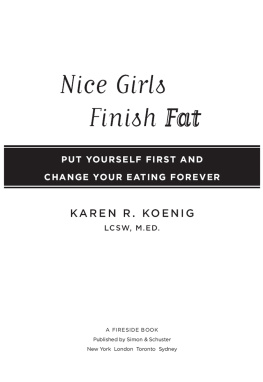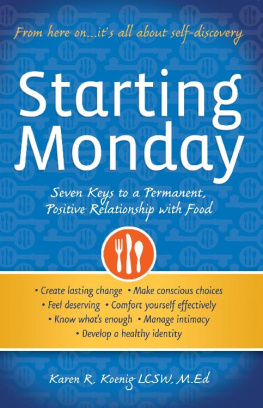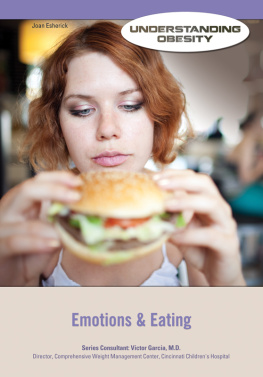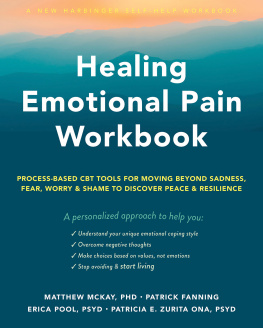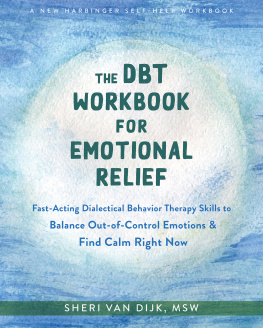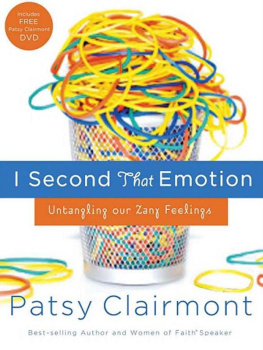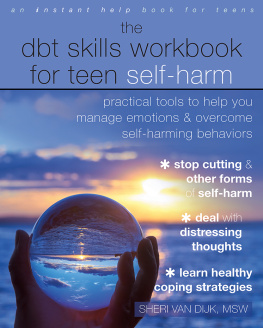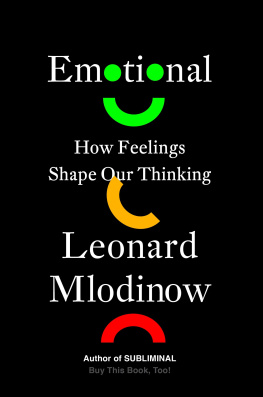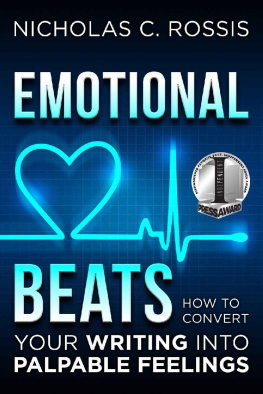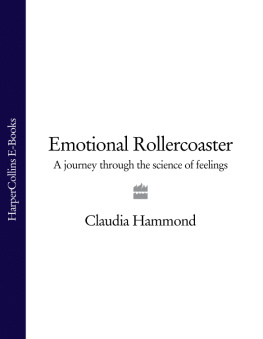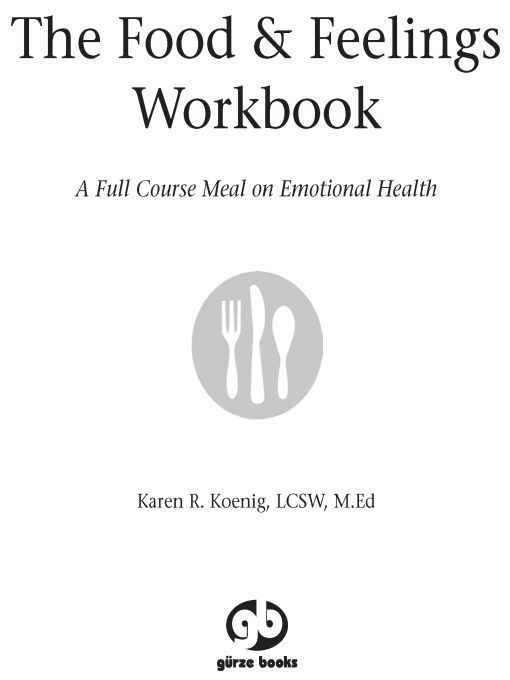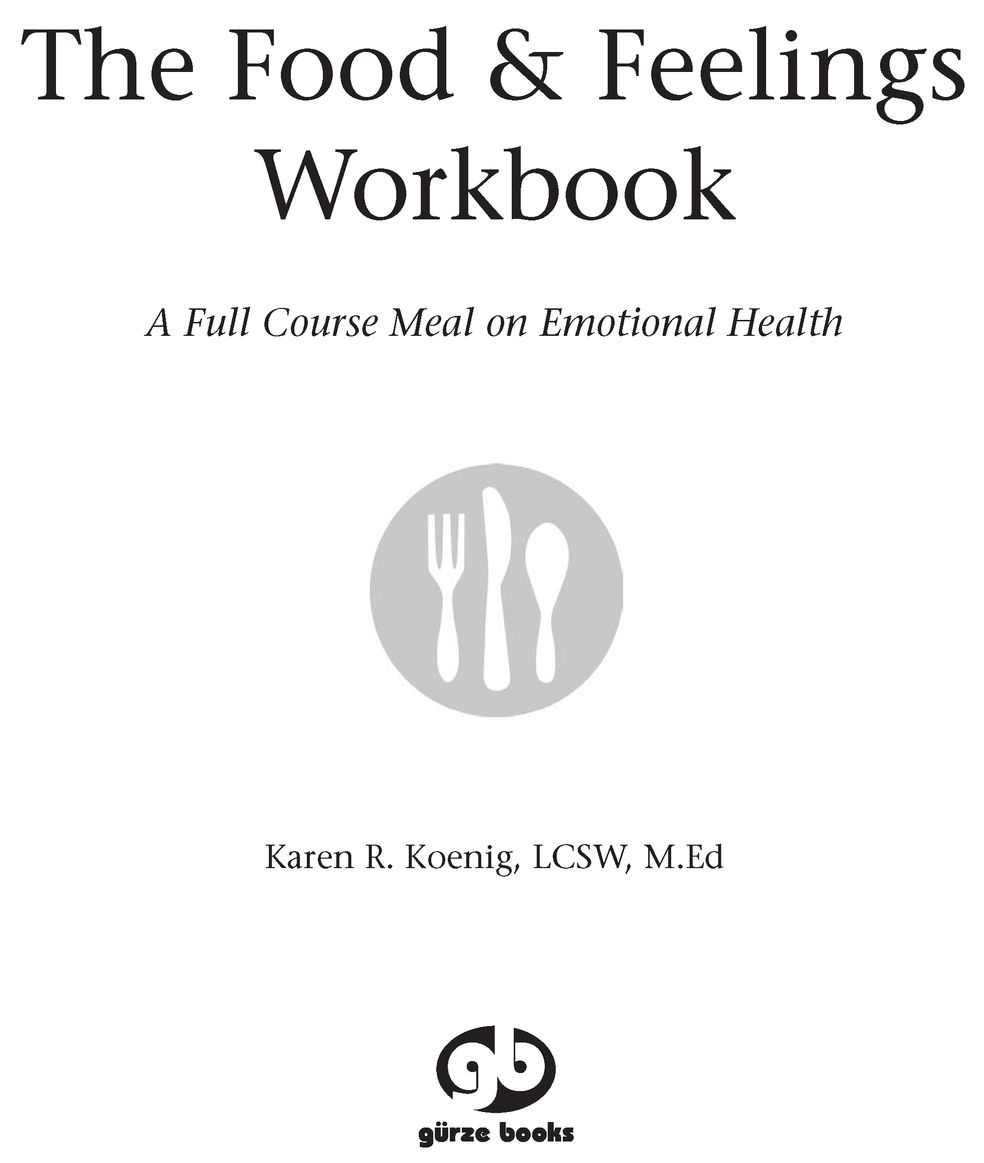Table of Contents
To my husband, Keithmany thanks yet again.
Acknowledgments
Over the decades Ive counseled and taught hundreds of troubled eaters and every one of them deserves a heartfelt thank you. As they poured their hearts out, kept digging away to discover what made them so crazy around food, and hunkered down for the hard work of overcoming their eating problems, I learned not just how tenacious an eating disorder can be, but also how resilient and courageous the human spirit is. I knew more than a bit about food and feelings from my own decades of self-destructive eating, but these wounded eaters rounded out my knowledge and helped me make connections I hadnt made before. To be honest, they taught me about as much as I taught them.
Grze Books was right behind me from the get-go when I mentioned the idea of a book about food and feelings, and they remain terrific collaborators. Special thanks and indebtedness go to Lindsey Hall Cohn and Lindsay Woolman for the outstanding job they did reshaping my ideas and words into more readable form, and doing it all with such good humor and high enthusiasm. This workbook truly has been a team effort. Janice M. Pieroni, Esq., my agent, is a friend and never puts down her megaphone if it means missing an opportunity to cheer me on. Cheers back to her.
Introduction
In nearly thirty years of teaching and counseling, Ive met scores of individuals whove impressed me with their incredible courage, doggedness, and passionate desire to heal their relationship with food. They generally ended up on my doorstep after decades of food and weight obsession, crash diets, binge eating, or food deprivation, shamefully aware of their distress and hoping against hope that I had an alternative to offer. As we talked and I explained the Cognitive-Behavioral treatment model I usethat our beliefs create our feelings and our feelings produce our behaviors, insight flickered in their eyes as they realized that there was more to change than just their eating habits.
Through our work together, these intrepid souls made tremendous changes in their thinking about eating, weight and body image as they moved toward developing a healthy belief system. They gradually relaxed around food as they followed the guidelines in my first book, The Rules of Normal Eating1) eating when youre hungry or have a particular craving, 2) selecting satisfying foods, 3) staying aware and focused on eating to maximize enjoyment, and 4) stopping when youre full or satisfied. With diligence and practice, they reduced their preoccupation with good and bad foods, increased their comfort dining with others, decreased their food binges, threw out their scales, started to find food pleasurable, and began to make peace with their bodies. For the first time in a long time (or maybe ever) they felt hopeful about resolving their food problems.
However, as time went on, I noticed a clear pattern: No matter how much their beliefs and behaviors changed, they remained stuck in one main area: handling their emotions. The same theme arose repeatedlycertain kinds of distress were too scary, overwhelming, anxiety-provoking, intense, and unbearable. They feared that allowing their discomfort to break into consciousness would overwhelm them and plunge them down a deep well of depression from which theyd never climb out. What if they went crazy and couldnt function? What if people stopped loving them because they werent upbeat and uncomplaining? It was easier and felt safer to focus on preparing for another binge, skipping their next meal, or losing that last ten pounds than to face internal turmoil.
These individuals had a lesson to learn about emotional suffering: that feelings have intrinsic purpose and value and that each of them could fully and deeply be with their hearts pain without fracturing into a thousand tiny pieces. They needed to learn that success in overcoming eating problems is directly related to experiencing a full range of emotions. Not surprisingly, as I helped students and clients explore their feelings and fears about them, they became emotionally unstuck: They raged, whimpered, howled, and quivered; they dug up the past and eventually laid it to rest. They looked reality squarely in the eye and started to use their feelings to take care of themselves more effectively.
They also stood up for themselves and said No more often. They became appropriately selfish and acted as if they deserved good things in life. Feeling entitled to their emotions, they were able to grieve their losses and celebrate their joys and satisfactions. They also began to articulate what they wanted out of life, stopped taking care of everyone elses needs instead of their own, and moved toward nourishing themselves physically, mentally, emotionally, and spiritually.
Then, something else amazing happened: their eating problems gradually subsided. Feeling replaced focusing on food and weight.
The Food & Feelings Workbook has two goals. The first is to give you support in letting go of dysfunctional eating behaviors and the second is to help you create a happier, more satisfying life. Achieving both of these goals depends on learning to handle your emotions effectively and appropriately. And although all feelings are important, I chose to examine seven specific ones that are more likely than others to drive disordered eating: guilt, shame, helplessness, anxiety, disappointment, confusion, and loneliness. Getting comfortable with these seven emotions is the only way to end a food and weight obsession once and for all. By making a practice of acknowledging, identifying, experiencing, understanding, and following them, youll be able to stop using food-related behaviors to regulate them. Youll learn to satisfy your deepest emotional longings appropriately and effectively, and as a result, your eating and your life will be transformed.
Our time on earth can feel far too long when were overwhelmed with shame about eating, plagued by lack of self-trust, and believe well never learn the secrets to true happiness. But its way too short when were joyfully engaged in meaningful work, in nurturing, intimate relationships and when we love ourselves and get a charge out of being alive.
If you missed Emotions 101 the first time around, youre a member of a very large club. The good news is that, as an adult, you can learn all you need to know.
The Food & Feelings Workbook will teach you how to:
welcome rather than fear feelings
value feelings as a barometer and mediator between internal needs and external circumstance
know when you have a feeling
identify exactly what youre feeling
bear feelings that you believe are intolerable
use upsetting feelings to learn about your emotional needs
take responsibility for all of your feelings
handle your feelings appropriately and effectively
use your feelings to improve your life and bring you happiness and satisfaction
disconnect food from feeling and stop emotional food binges
stop obsessing about food and weight
stop using control of your food intake to distract yourself from feeling
enjoy food as a delicious, sensory delight
take care of yourself emotionally without focusing on food
At the beginning of this workbook, youll find a


